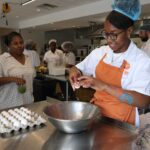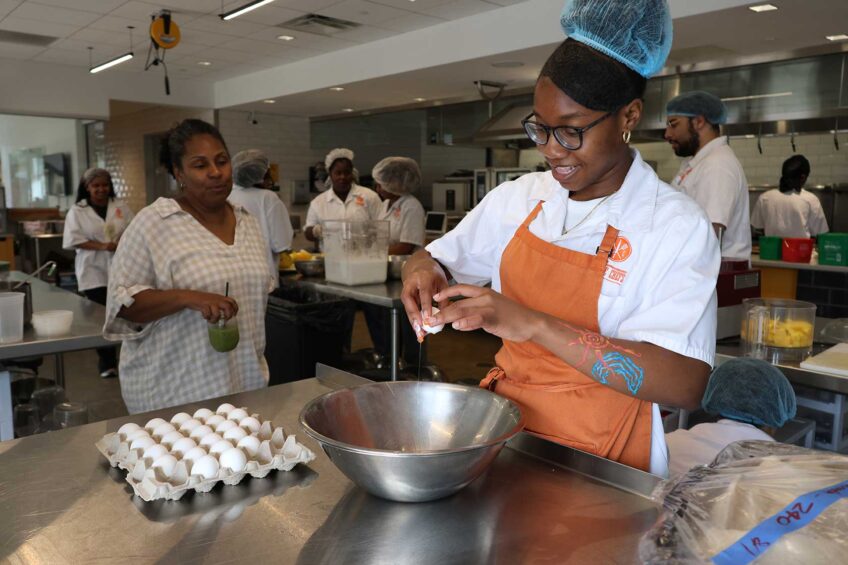Why is BPS transferring property to the city?
School closures, transfers spark questions

BPS officials say they’re spending $1 billion as part of a ten-year process aimed at building new schools and renovating existing ones to fit changing needs of the city’s students.
But parent activists, school committee members and city councilors are still looking for clear answers on what will get built, when and for whom, and some expressed frustration during meetings last week at City Hall and the Boston School Committee as BPS officials answered questions on the BuildBPS planning process.
While district officials’ decisions last year to close the West Roxbury Education Complex and the McCormack Middle School caught students and parents by surprise, now city councilors and parents are wrestling with the uncertainty of the timeline for building new schools.
“It’s frustrating to hear that we’re talking about planning to make a timeline about conversations, as opposed to making sure that our kids are going to have access to renovated or rebuilt or new schools,” at-large City Councilor Michelle Wu said during a Feb. 25 hearing on BuildBPS in the council chamber.
During that hearing, BPS officials said it will take five to seven years to construct new buildings with Massachusetts School Building Authority funding, from the beginning of the application process to completion.
At the same time, last year’s controversial closing decisions came with a suddenness that caught students and parents at the schools off guard.
Hyde Park land deal
The long timelines and uncertain future of some school communities came to the fore at last week’s Boston School Committee meeting, when district officials brought before the committee the recommendation to convey the shuttered Rogers Middle School in Hyde Park to the city’s Department of Neighborhood Development.
BPS Chief of Staff Rob Consalvo told School Committee members the building, closed in 2015, would cost $80 million to renovate. He said building a new school in Hyde Park is a priority under the BuildBPS plan, but that it will only happen after new schools are built in other neighborhoods. At this point, the Rogers building would be better freed up for other uses by the city, he explained.
“If the School Committee was to vote to surplus the Rogers School and divest of this property, this property would then be allowed to be placed under the care and custody of the city of Boston to help meet the needs of other city priorities,” Consalvo told School Committee members. “The reality is that this is a property and a parcel that we won’t be investing in any time soon. It will continue to deteriorate, it will continue to be a public safety issue in the neighborhood.”
Consalvo faced pushback from several School Committee members who balked at the district’s plan to divest itself of a building without a clear plan to replace it. Using a sports metaphor, Committee member Michael O’Neil said the district is proposing a trade for a player yet to be named.
“We have to have an inventory of property to have flexibility,” O’Neil said. “Vacant property is being snapped up and built on over this entire city every time we blink. If we know there’s a need, why aren’t we working now with the city to identify a property that we could put a hold on and, in effect, do a trade?”
Committee member Hardin Coleman pressed Consalvo on what guarantee the city would give that it would eventually secure BPS a new site for a new Hyde Park school.
“Is that a guarantee or a maybe?” he asked.
“It’s guaranteed we’ll be working with the city to identify another parcel,” Consalvo responded.
Coleman expressed doubt that the commitment would be honored under a new mayor.
O’Neil and other committee members said the city would have to give a strong guarantee that the building would not be conveyed to a charter school, which could draw more state funding away from the cash-strapped district.
“We have a public that wants to have faith in us and wants to believe in what we’re doing,” he said. “We all know if this school committee votes to dispose of a property as we say that there’s a need in Hyde Park, people are going to criticize us and say what are we doing giving up property. What’s going to end up there? Is there going to be a charter school or something like that?”
Blogger Alain Jehlen pointed out on his Boston Parents Schoolyard News page the similarity between that proposed conveyance of school property to the city and the district’s ongoing push to divest the McCormack Middle School of its athletic fields — an effort that came as the district sought to close the Dorchester school last year.
Disparities cited
Land deals aside, parents and city councilors expressed frustration over a range of issues with BuildBPS. Dorchester resident and former BPS teacher Christine Langhoff said she was concerned that BuildBPS would increase racial and economic segregation, as the district seeks to build schools aimed at keeping students in the communities in which they live as part of its focus on neighborhood schools.
“It’s poor public policy to concentrate students… who are likely to be those with the highest needs into a few schools located only in the neighborhoods left behind through gentrification,” she testified during last week’s council hearing. “BuildBPS seems to envision a city where children attend traditional schools only within their neighborhoods during the totality of their K-12 experience.”
Langhoff cited the private donations flowing to schools such as Boston Latin School, which has one of the lowest concentrations of low-income students in the district but a $55 million donor-raised endowment, and the North End’s Eliot Elementary School, which has received $450,000 in donations in recent years.
While the Eliot has a new building, students in the West Roxbury Education Complex, which educates a lower-income demographic than that of the North End school, saw their school building shuttered after school officials determined repairs to the WERC building would be too expensive.
BPS teacher Andrea Doremus Cuetara also questioned whether BuildBPS would exacerbate what she said was rising inequality in the school system, with school closures disproportionately affecting low-income students. Cuetara suggested that had Boston Latin School faced facilities problems similar to those faced in West Roxbury, closure would not have been considered.
“Is the value of some BPS students simply higher than the value of others?” she questioned. “What does BuildBPS really mean? How do we truly build the best public school system in the U.S. in the way that Boston has been first in many ways? Unless we value all our students equally, we do a disservice to all of them.”







